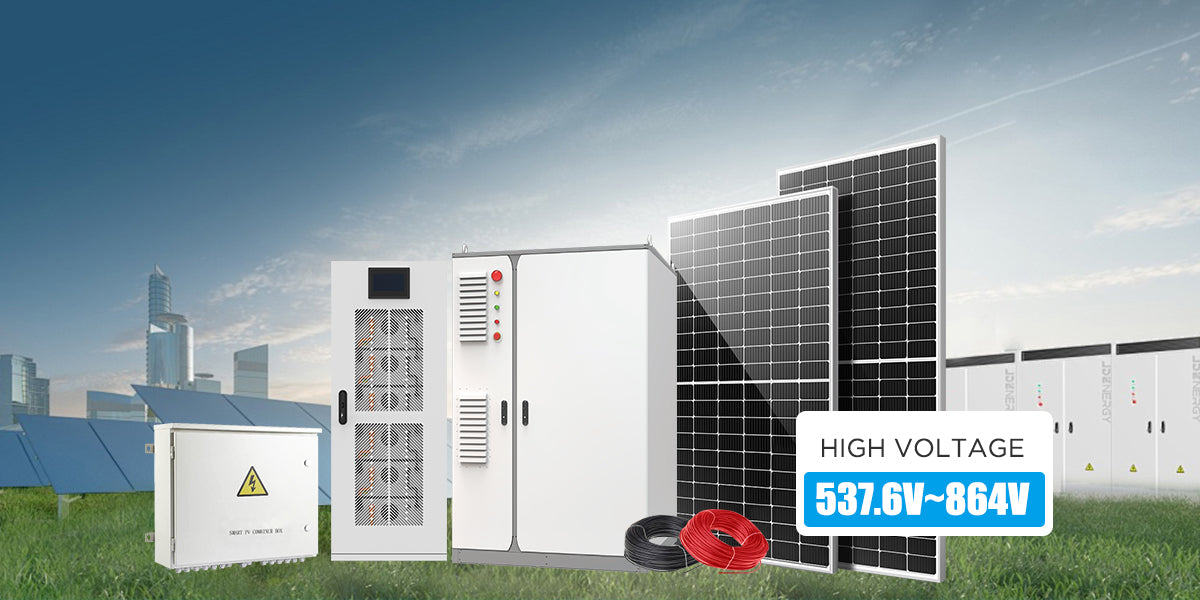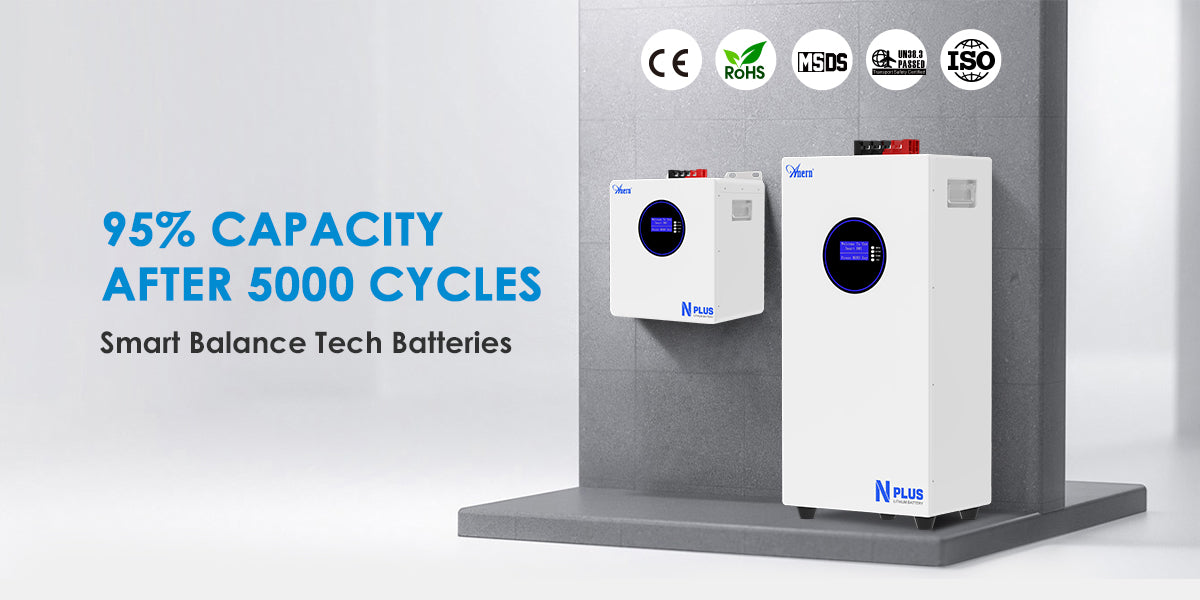Solar batteries help people save energy and use power during the night or in cloudy weather. Many homes now use lithium-ion solar batteries because they work well and last longer than other types. Still, the battery will only last a long time if it is used and taken care of correctly. This guide explains what affects battery life and how to protect it step by step.
Why Your Solar Battery's Lifespan Matters
Battery life affects both money and daily energy use. A longer-lasting battery means fewer replacements, less electronic waste, and better savings over time.
Short battery life can lead to extra costs. If the battery fails early, homeowners may need to pay hundreds or even thousands of dollars to get a new one. Also, when a battery starts to wear out, it may store less power. This reduces how much energy a person can use at night or during power cuts.
What Affects Lithium-Ion Solar Battery Lifespan
Many small details can change how long a lithium-ion solar battery lasts. Below are the most important ones to know:
- Charge Cycles. Each full charge and discharge is one cycle. Most lithium-ion batteries can handle between 3,000 to 6,000 cycles. After that, the battery may lose strength and hold less power.
- Depth of Discharge (DoD). Depth of discharge means how much power is taken from the battery before recharging. A DoD of 100% means the battery was fully drained. A lower DoD, like 80% or 70%, is better for battery health.
- Operating Temperature. Too much heat or cold can cause damage. High heat may lead to faster chemical breakdown inside the battery. Cold weather may reduce how much power the battery can deliver.
- Charging Speed. Fast charging is not always helpful. Charging too quickly can cause stress to the battery and reduce its life. Slow and steady charging keeps the battery safer. Many battery systems adjust charge speed automatically, but manual settings should also be checked.
- Inverter and System Quality. A battery does not work alone. It needs a good solar inverter and proper wiring. Poor system design may send the wrong amount of power to the battery. This can shorten battery life.

How to Maximize Lithium-Ion Solar Battery Life
You don’t need to be an expert to keep your lithium-ion solar battery healthy. A few smart steps can protect it from early damage. Below are practical, science-based tips that are useful for every home.
1. Keep Battery in a Cool, Dry Spot
Lithium-ion batteries do best in stable indoor temperatures. The best temperature range is 59°F to 77°F (15°C to 25°C). Too much heat speeds up chemical aging. Cold temperatures slow down energy flow.
Do not place the battery in direct sunlight, near heaters, or close to air vents. Humidity also matters. A damp room may cause rust or short circuits. Use a clean, dry area with airflow.
If you must store the battery outdoors, pick a model with weatherproof protection (IP65 or higher). Even then, try to place it in a covered spot to avoid heat or snow.
2. Use Partial Discharges
Discharging a battery too deeply causes faster wear. Each full discharge stresses the battery cells. That stress lowers the total number of charge cycles the battery can handle.
A good range is to keep the depth of discharge (DoD) between 20% and 80%. For example, if your battery holds 10 kWh, try to use only 6–7 kWh before charging again.
Some systems let you program the DoD limit. If your system doesn’t, use energy monitoring tools to track battery use more carefully.
3. Avoid Overcharging
Charging the battery past 100% may damage its cells over time. It also causes extra heat, which wears out the battery faster.
A Battery Management System (BMS) helps avoid this. It tracks voltage, current, and temperature. Most modern solar batteries come with a built-in BMS.
Make sure your inverter and solar charge controller match the battery specs. Mismatched voltages can cause overcharge or undercharge issues.
If your system uses third-party inverters or controllers, double-check that they support lithium-ion battery settings.
4. Limit Fast Charging
Fast charging sends a lot of current to the battery in a short time. This creates heat and pressure inside the cells. Over time, fast charging can crack or swell internal materials.
For daily use, choose standard or eco charge modes. These modes keep current low and charging more balanced. Only use high-speed charging when absolutely needed—like during outages or backup use.
Some systems also let you limit the charging current manually. Setting a lower charge current (for example, 0.5C instead of 1C) will help your battery last longer.
Note: “C” is a unit that compares charging rate to battery capacity. 1C means the battery charges fully in 1 hour.
5. Clean and Check Connections
Dirt, dust, or moisture on cables and terminals may cause resistance. This can waste energy or create hot spots that damage the system.
Check the battery terminals, inverter ports, and cables every 3 to 6 months. Look for:
- Green or white powder (sign of corrosion)
- Burn marks (possible overheating)
- Loose wires or cracked insulation
Use a dry cloth or a soft brush to clean dust. Do not use water or cleaning spray. Tighten loose screws carefully using insulated tools.
If you're not sure what to do, ask a solar technician during annual system maintenance.
6. Update the System Software
Many solar systems use smart software to manage charging, discharging, and grid interaction. Software updates may fix bugs, improve battery control, and add energy-saving features.
Most systems show the current version on a display screen or app. Check for updates every 6 to 12 months. If the system connects to Wi-Fi, updates may happen automatically.
If you use an off-grid setup or manual controller, ask your installer how to get the latest firmware.
Some newer systems also allow remote monitoring. These tools help you track charge levels, error warnings, and energy use. Watching this data helps catch problems early.
7. Avoid Full Disuse
Leaving the battery unused for many months may cause deep self-discharge. When voltage drops too low, the battery may not recover. This is called “deep sleep” or “battery bricking.”
Before long-term storage:
- Charge the battery to around 50%
- Disconnect it safely from the inverter
- Store it at room temperature, out of sun or frost
Check the battery every 3–6 months. If charge drops below 30%, charge it again to 50%. Use a compatible charger and follow the instructions in the battery manual.
Some systems have a special “storage mode.” This keeps the battery at a safe level automatically. Use it if available.
A healthy solar battery helps people stay powered, save money, and reduce waste. With good care, one battery can serve a home well for 10 years or more.
FAQs
Q1: How do lithium-ion solar batteries handle partial shade on solar panels?
A: Partial shade does not directly hurt the battery, but it affects charging. Less sunlight means slower or incomplete charging. If this happens often, the battery may not reach full capacity. Over time, this can lead to irregular charging patterns that lower performance. Use microinverters or panel optimizers to reduce the effects of shading.
Q2: Can I connect more than one lithium-ion solar battery to my system?
A: Yes, many systems allow battery expansion. This is called “scaling.” Always use batteries of the same brand, model, and age if possible. Mixing different types or old and new batteries may cause imbalance. Use a system that supports parallel connection and includes a battery combiner or hub to manage them safely.
Q3: Does using a lithium-ion battery for both solar and grid power shorten its life?
A: Not always. Using grid power to charge the battery during low-sun periods is safe if managed well. The key is balanced cycling. Avoid charging and discharging too often in one day. Smart hybrid inverters help switch between solar, grid, and battery modes without stress on the battery.
Q4: What is a C-rate, and how does it affect battery health?
A: The C-rate tells you how fast the battery charges or discharges. A 1C rate means the battery charges in 1 hour. A 0.5C rate means it charges in 2 hours. Higher C-rates cause heat and shorten battery life. Most home systems work best at 0.5C or lower. Always check the battery’s manual for its safe C-rate range.
Q5: Can a lithium-ion solar battery catch fire if used incorrectly?
A: The risk is very low with modern batteries, but not zero. Overcharging, high heat, or physical damage can lead to “thermal runaway,” a rare but serious condition. To stay safe, never tamper with the battery case, never bypass the battery management system (BMS), and keep the battery away from flammable materials.





Leave a comment
All comments are moderated before being published.
This site is protected by hCaptcha and the hCaptcha Privacy Policy and Terms of Service apply.